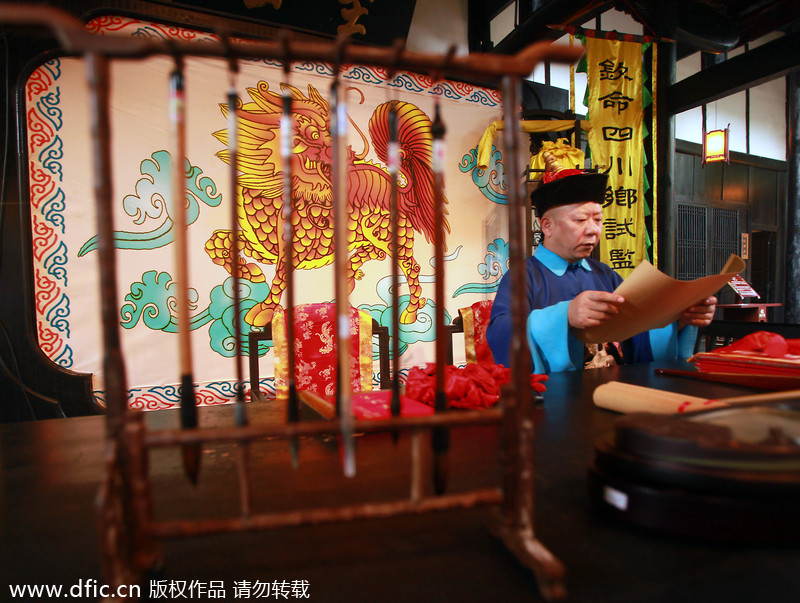 |
|
The process of the ancient imperial examination is performed in Langzhong, Sichuan province on September 25, 2013. [Photo/IC]
|
How was the examination conducted?
The examination was held once every three years and it consisted of four levels: the county examination, provincial examination, academy examination and palace examination. Candidates had to first pass one level in order to take part in the next level. Each examination would take from one to three days to complete, and candidates were locked in a small cubicle and received cold meals.
Most candidates in ancient China had to go a long way to the capital city for the exam. As transportation in ancient times was not developed, they usually went to the capital on foot, and some took several months to reach their destination.
Most candidates were scholars of very limited financial means who wore simple clothes and carried their books, writing brushes, ink sticks, paper and food with them on their way.
On the exam day, candidates had to first go through a sort of security inspection – like at today's gaokao, but without electronic machines. They had to let their hair loose so that it could be checked and their trouser legs, shoes and socks, even bottoms were also checked.
